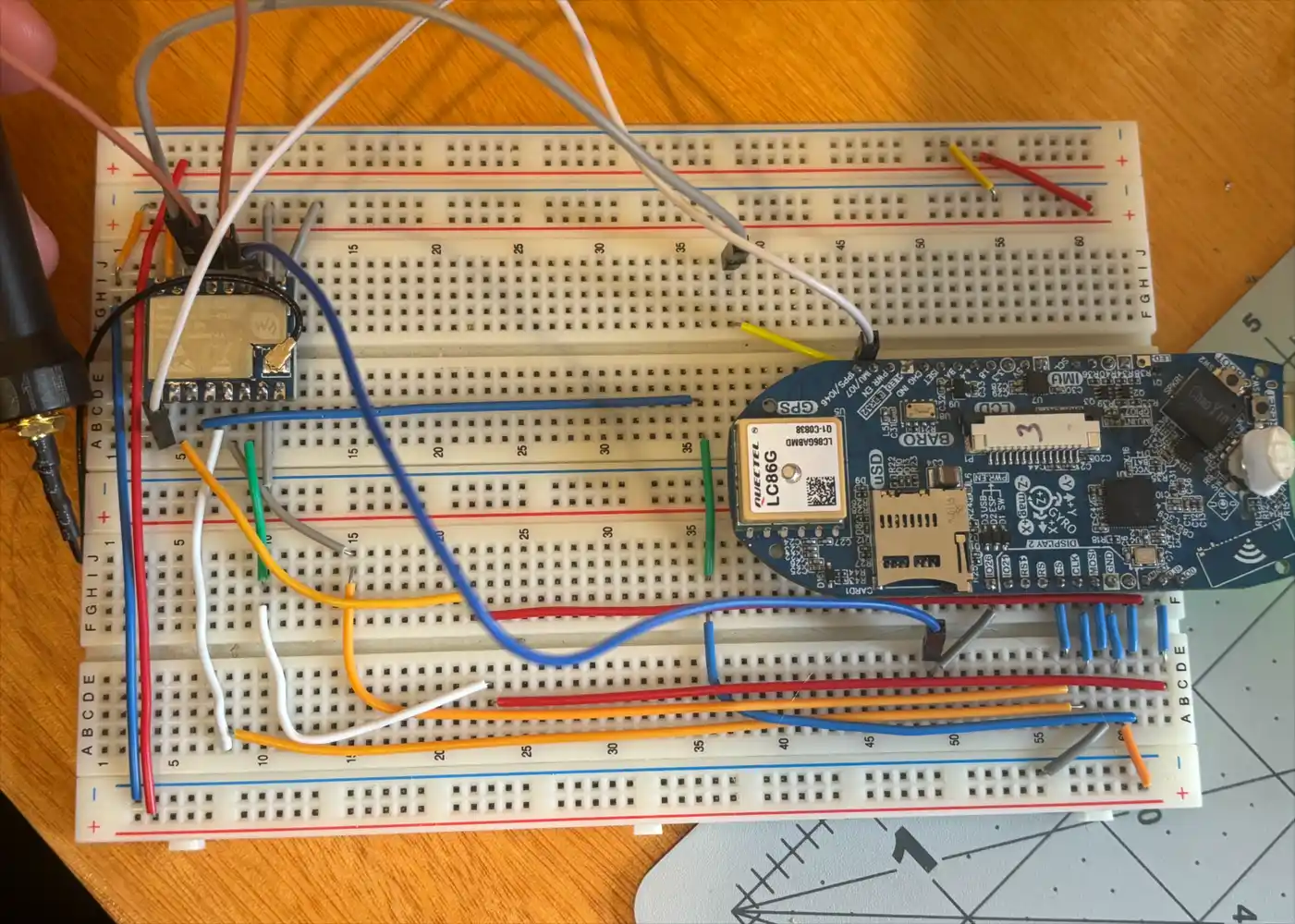LoRa with the Leaf
From my Previous Post, I mentioned one of the things I wanted to have working was Fanet.
This post is the first in a series of how I’m implementing Fanet into the Leaf and covers setting up my hardware testbed to send and receive LoRa frames using the Leaf.
Selecting Hardware
I’ll be testing with the Lilygo T-Echo running SortRF. The SortRF compatibility note mentions that Skytraxx module uses the SX12xx family of chips.
As it seems there are a bunch of projects out there using it, we’re running with the SX1262 chip, but it also looks like a newer Lr1121 is an option. There’s probably more FCC certified Sx1262 options out there though.
In our Leaf, we’re looking at using the Seeed Studio Xio-SX1262 due to it being FCC certified. To get something that will run on a breadboard, I’m testing using the Waveshare Core1262. Same chip, but some differences.
Preparing the Hardware
James had given me some older revision boards that are going to be perfect for testing on. They have a lot of their IO broken out around the edges that fits nicely on a breadboard.
As there’s not enough free GPIO pins, for this purpose I removed the 0ohm resistors to the GPS 1pps and IMU interrupt pins.
 Location of 1pps 0ohm resistor
Location of 1pps 0ohm resistor
 Location of interrupt 0ohm resistor
Location of interrupt 0ohm resistor
The Waveshare SX1262 module was hooked up to the SPI pins.
#define SPI_MOSI 11
#define SPI_CLK 12
#define SPI_MISO 13
One of the biggest differences in the two modules is Seeed studio has a single “RF_SW”, and our Waveshare has both a RX and TX enable.
To get the same functionality out of the WaveShare chip, we jumpered the DIO2 pin to TX enable, and setup the radio like this.
#define LORA_PIN_LORA_RESET 39 // LORA RESET
#define LORA_PIN_LORA_DIO_1 46 // LORA DIO_1
#define LORA_PIN_LORA_BUSY 7 // LORA BUSY
#define LORA_PIN_LORA_NSS 0 // LORA SPI CS
#define LORA_RADIO_RXEN 21 // LORA ANTENNA RX ENABLE
#define LORA_DIO2_ANT_SWITCH true // We use DIO2 as an antenna switch
SX1262 radio = new Module((uint32_t)LORA_PIN_LORA_NSS,
(uint32_t)LORA_PIN_LORA_DIO_1,
(uint32_t)LORA_PIN_LORA_RESET,
(uint32_t)LORA_PIN_LORA_BUSY);
The Software
Below is the full demo sketch, using the RadioLib library (same as Meshtastic) where I can test that I can at lease see Meshtastic long-fast frames using their given settings:
[SX1262] Received packet!
[SX1262] Data: ����!�/./c
[SX1262] RSSI: -35.00 dBm
[SX1262] SNR: 5.75 dB
[SX1262] Frequency error: -595.78 Hz
